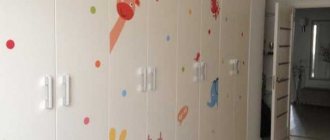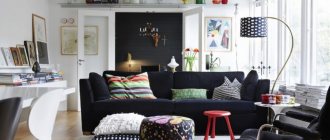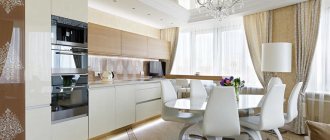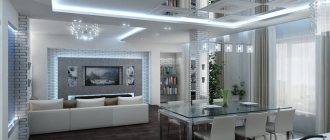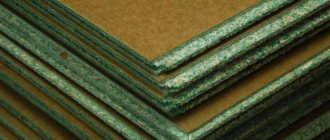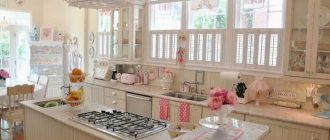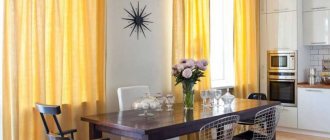Compound
Pearlescent paint is made from pigment, water and acrylic resin. The pigment is based on mother-of-pearl, extracted from sea shells or fish scales. It is ground into powder and dissolved in environmentally friendly acrylic resin. It dries quickly without releasing harmful substances. The composition contains ethyl alcohol, so paint with a mother-of-pearl effect is diluted with water. Paint has high adhesion (that is, tenacity, stickiness) to the materials to which it is applied. The painted surface retains its attractive appearance for a long time.
Kitchen apron
Is it unusual to see mother-of-pearl mosaic in the kitchen, especially as a kitchen apron? Do not doubt that such a mosaic will withstand both the high temperature from the stove and the steam from boiling water. But it is better to wipe off oil splashes immediately.
Photo: venturaflooring.net
Photo: ceparts.info
What is mother of pearl?
Powder with reflective pigment is diluted with water-based dyes, usually acrylic. The greater the concentration, the stronger and more varied the refraction of light will be. The pigment exists in the form of powder, paste or finished enamel. They are also added to varnish or wax. But working with it requires skills, otherwise lumps and a “spotty” uneven structure will appear during the mixing process. It is good because it can be mixed with any acrylic paint, and the color and saturation can be adjusted as desired.
Much easier to mix the paste. But it has a shorter shelf life than dry mixture, so it is not bought for stock.
For people without experience working with mixtures, ready-made acrylic pearlescent enamel is suitable for simple painting.
Mother of pearl is universal
Most decorative plasters either already contain mother-of-pearl components, or the pigment is added to the plaster paint.
Covering warm colors is considered especially successful. A pigment has been created, thanks to which the decorative surface does not dazzle with bright tints even in direct sun, and with a change in the point of view, the “rainbow” smoothly gives way to dullness.
The grains of mother-of-pearl are colored yellow or gold. This gives the iridescence a soft, velvety feel.
Pearlescent wall paint looks organic on wood, long-varnished surfaces and surfaces darkened by time. Creates gloss on wallpaper, plastic cladding, water-based coating. Acrylic with the addition of mother-of-pearl is used to decorate surfaces made of different materials: concrete, plasterboard, brick, metal, glass. This can be photo wallpaper, paper or cardboard, polystyrene foam, plastic panels.
Panel
And a very popular element of interior design of houses and apartments in eco-style in recent years is a panel made of mother-of-pearl mosaic. Moreover, you can place it not only in the bathroom or in the kitchen - such a panel can decorate the corridor, bedroom and even living room. This is a real art object that will be appropriate in any room, will move with you to a new place of residence and will delight your children and grandchildren.
Photo: ae01.alicdn.com
Overspray will not harm the paint
The addition of mother-of-pearl does not impair the basic properties of acrylic enamel. Special components create additional protection (anti-corrosion, anti-fungal or anti-rot) without reducing the decorative effect.
Paint with a mother-of-pearl effect is durable and resistant to natural factors. For this reason, it is chosen for the final decoration of interior spaces or facades.
However, there is an exception. Only in the interior decoration they use mother-of-pearl with a gold effect. And preferably not on walls facing the sunny side - under the influence of ultraviolet radiation, the golden background fades and becomes dull. Silver is much stronger. The interiors and external surfaces of the building are decorated with this mother of pearl.
Features of wall design
If used correctly, you can easily achieve the desired style. Easily combined with other materials. They transform space, create an elegant atmosphere, and are practical due to the pattern and design, which allows you to hide minor irregularities.
- Large and bright monograms are not advisable to use in small rooms.
- In rooms with low light, it is better to use lighter and warmer shades.
- In order to give the room geometry, you can create an accent using large patterns on one wall.
- Using monograms in combination with flowers, it is possible to make the room more comfortable and homely.
- When gluing, you need to take into account rapport in order to purchase rolls with a reserve.
Decor varies
Acrylic paint with mother-of-pearl is added to decorative plaster. The ratio of the amount of mother-of-pearl and varnish gives a different decorative effect. The predominance of varnish scatters light more strongly and highlights one shade. The impressive layer of varnish allows only a slight glow of the layers.
The preponderance of pearlescent paint in the varnish creates brighter and deeper shimmers. The paint color plays a secondary role here; it only gives the desired shade to the glossy surface. But excess shine or radiance is tiring for the eyes and psyche, so individual elements of the interior or small segments of the walls or ceiling are emphasized in this way.
With a slight addition of mother-of-pearl to the varnish, the surface plays with new shades and colors. Mother of pearl gives a soft, mysterious shimmer that creates harmony and comfort.
By experimenting, you can always choose the option that suits you.
Bath
Despite the fact that mosaic tiles adhere best to a flat surface, if you really want, you can cover the outer surface of the bathtub with them. Hexagonal mosaic tiles on a decorative screen against a wall of the same color and in the same design will look great.
Photo: shopsmartexpress.com
Photo: nautmile.com
Painting and tinting: how to do it?
Paint with a mother-of-pearl effect is applied with conventional painting tools.
- It is convenient to decorate large areas with a roller, preferably fur, with a thin short pile. The drawing turns out to be rough and raised, but for a large format this proportionally enhances the radiance of the texture. The paint is distributed quickly and evenly.
- A foam sponge allows you to get beautiful stains on the surface. The paint is applied by pressing or in a circular motion.
- The brush is used for painting small areas: the joints of walls and ceilings, hard-to-reach or difficult-to-relief segments. She draws with mother-of-pearl individual fragments on which they want to focus attention (frames, small objects in the composition).
- The spray gun is refilled with a pre-made composition containing no more than 40% water. With more water content, the paint does not adhere well, and its protective properties (for example, anti-corrosion) will deteriorate.
- A brush (or brush) with fairly stiff bristles produces a texture similar to the iridescence of a bird's feather.
- Using a spatula, a simple structure of decorative plaster is formed.
How to apply the coating?
Pearlescent wall paint is applied using the same technology as other acrylic compositions. The main steps are:
- The surface to be painted is thoroughly cleaned of dirt and other deposits, washed and dried. Cracks in the wood are repaired and the concrete is plastered.
- The surface is primed and completely dry.
- Paint is applied; To obtain a high-quality result, two layers are done.
- If only part of the surface is to be painted, cover the unpainted area with masking tape while working and drying.
The process is not very complicated, and with some skill it can be done independently.
Sand dune at your home
Pearlescent paint with sand is very interesting for decoration. It is chosen by fans of oriental style, classics, and techno. But unlike decorative plaster, this paint emphasizes all the imperfections of the walls: obvious flaws, unevenness. Therefore, the preparatory stage is especially important - the walls must be absolutely even and smooth.
Two layers of soil are laid on them: deep penetration acrylic and special quartz. Apply the base paint of the selected color with a roller. A little sand is evenly applied to the wall with a brush, after which it is smoothed, creating the necessary decorative effect. The technology is not too complicated, but it is better to contact a specialist.
| Decorative wallpaper is a new product in the construction world, allowing you to create an atmosphere of aesthetics and comfort in your home. They consist of natural ingredients, which ensures their antistatic properties. The property of not collecting dust makes them even more valuable in terms of maintaining health. |
| —click on photo to enlarge— |
| decorative wallpaper photo | ||
| Decorative wallpaper is used for finishing both residential premises and offices. A rich range of colors allows you to give free rein to your imagination and vary colors and shades from calm pastel tones to avant-garde ideas. For example, wallpaper in gray tones allows you to create a business atmosphere in the office. Those who want to surround themselves with luxury and splendor are advised to purchase mother-of-pearl wallpaper with the addition of azure powder or with a silk coating effect. Such decorative wallpaper will bring an atmosphere of wealth and respectability to the interior. For lovers of the avant-garde, compositions created from colored mother-of-pearl spots are suitable, which will bring bright variety to the interior of the house. In this case, you will need to contact a professional technician. |
decorative wallpaper and its application To apply decorative wallpaper to walls, a roller, spatula or spray bottle is usually used. The process itself is not particularly difficult. The appearance of dried decorative wallpaper is a bit like the structure of wet silk. Decorative wallpaper is an environmentally friendly finishing material with pearlescent properties. Using knurling when applying wallpaper to walls makes it possible to obtain an ornament or design. In this case, part of the decorative wallpaper is fixed to the wall by hand, and then rolled out in different directions with a roller.
What to remember when working with decorative wallpaper: · walls are cleaned of dirt, old coatings, dust, fungus, and prepared for painting; · the surface of the walls is treated with a primer; · decorative wallpaper is applied at a temperature not lower than +5°C; · the contents of the package with azure are poured into a separate container; · - in the presence of azure additives, mixed with the main mixture; · - fill the contents of the container with water, in the amount indicated on the packaging, and mix thoroughly until a homogeneous mass is obtained; · decorative wallpaper is applied to the work surface using a spatula or by spraying from a “gun”, depending on the type of wallpaper, according to the instructions. · time for complete drying of the coating varies from 6 to 24 hours depending on the temperature and humidity of the room. Special properties of decorative wallpaper Pearlescent liquid wallpaper has exceptional properties and is capable of filling gaps at the joints of frames, baseboards, and trim. This is an excellent finishing material that does not create seams, which is not afraid of uneven corners and curved walls. But to achieve the desired result and obtain a high-quality coating, the walls should be prepared for painting and primed. For this purpose, you can use zinc white or water-based paint as the most budget-friendly option for a primer material. However, there are also special primers from the well-known company bella; the price range is very wide. It must be remembered that a dark primer is not suitable for light decorative wallpaper, since the dark background will show through. Pipes and radiators can also be covered with decorative wallpaper, having previously insulated the metal surface. This need is caused by the ability of decorative wallpaper to allow moisture to pass through, which can cause rust to form on the metal, and stains will appear on the surface. Decorative wallpaper is a good option for decorating apartments in new buildings. Shrinkage, which usually accompanies new houses, is not dangerous for them: they do not deform and do not lose their original beauty due to their elasticity. With decorative wallpaper, you can immediately begin finishing the apartment and make it cozy and not boring. Decorative wallpapers have a microporous mother-of-pearl structure, which allows them to “breathe”, i.e. allow moisture and air to pass through, provides heat and sound insulation. They can also be used to decorate a kitchen or bathroom, but in this case, decorative wallpaper requires protection as colorless wax. The protective layer will not affect the appearance of the wallpaper, will not allow moisture to penetrate inside, will allow it to be subjected to wet cleaning, and will not deprive it of the ability to “breathe.” Bella company – manufacturer of decorative wallpaper 1. One of the manufacturers supplying decorative wallpaper to the Russian market is . This is the first company that began to produce a new product in the world of design - decorative wallpaper. Having at its disposal a rich palette of colors, numbering about 150 colors and shades, this unusual wall covering allows designers to solve the most complex interior decoration tasks. The composition of decorative wallpaper includes loose cellulose, mica, adhesive, silk, and high-quality dyes. They are applied to an already prepared, cleaned and primed surface. After the walls covered with decorative wallpaper have completely dried, they can be coated with wax to increase the moisture resistance of the coating. 2. The German company offers Russian consumers its new product - mother-of-pearl coating. By mixing mother-of-pearl fibers with a solution of dye, water and a binder, it provides great opportunities for the expression of imagination and the embodiment of ideas in interior design. Before applying “bella” to the walls, they should be treated with a special primer, otherwise, all stains from the wall will migrate to the mother-of-pearl coating. A large panel should be made and applied in one step. Another representative of wallpaper is . Our collection includes about 40 varieties of coatings in various colors and spectacular textures. High hygroscopicity implies the use of materials in rooms with low humidity (mainly apartments and office premises), since under the influence of excess moisture the coating can be observed (draining) from the surface of the walls. | |||||||||||

